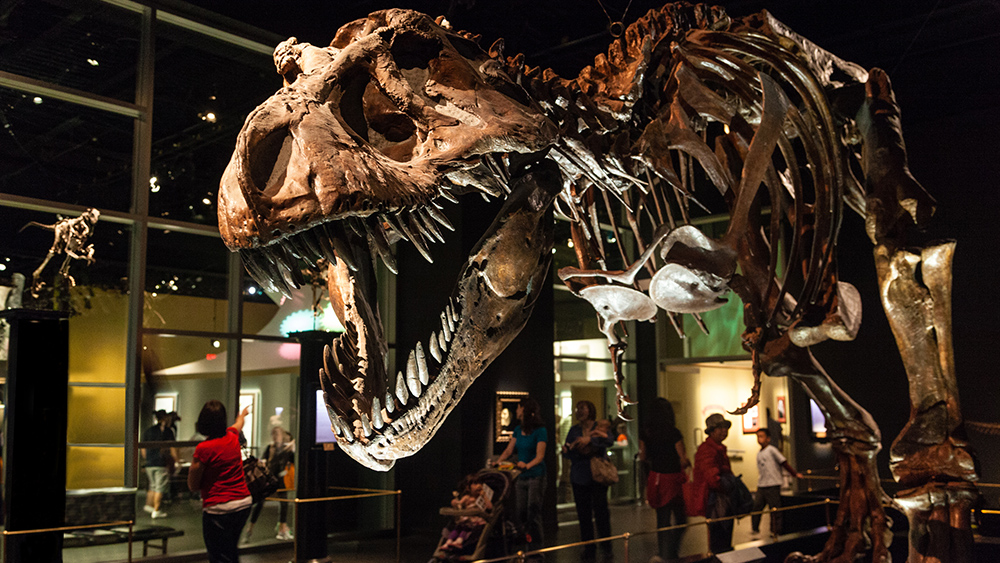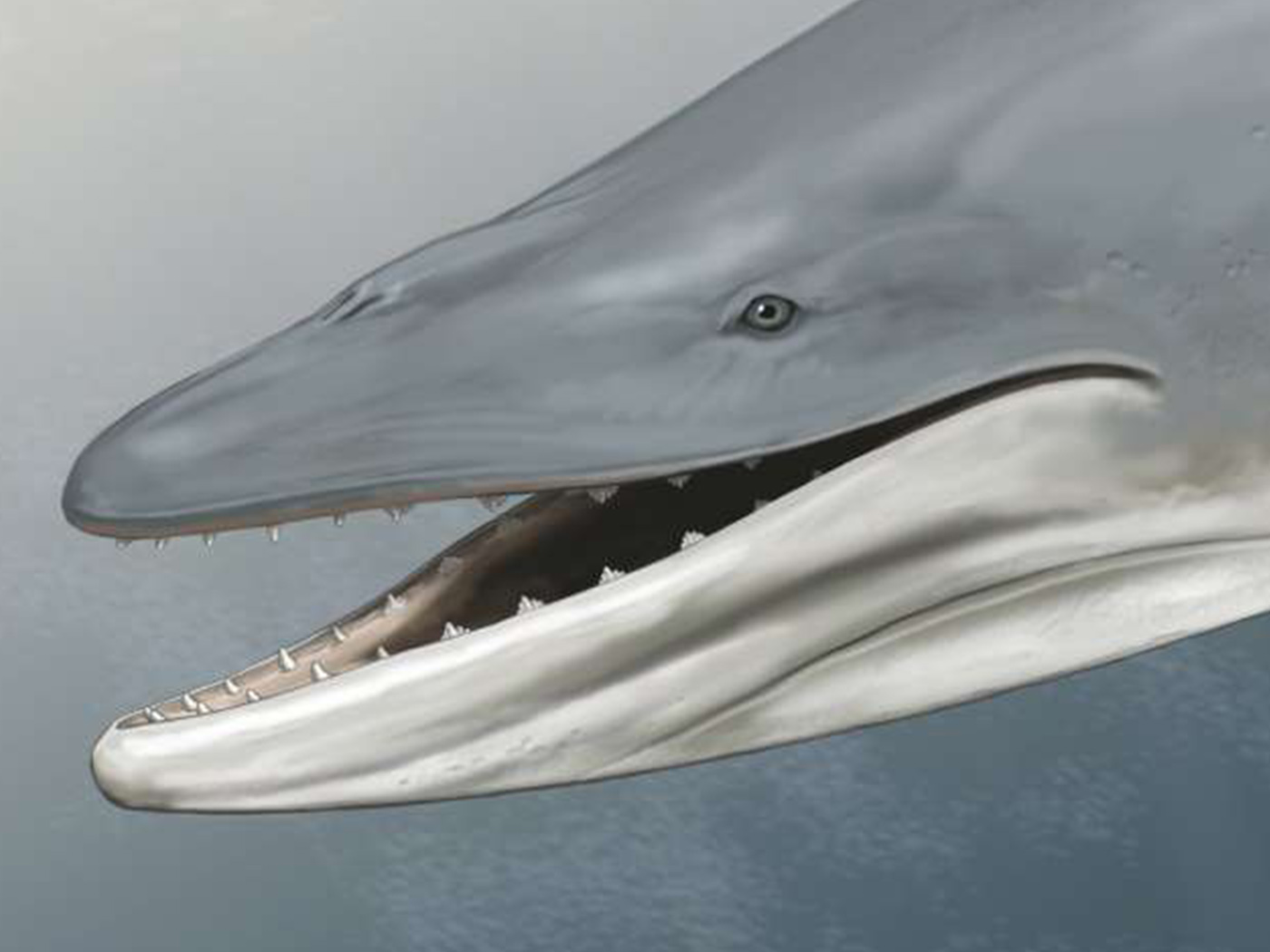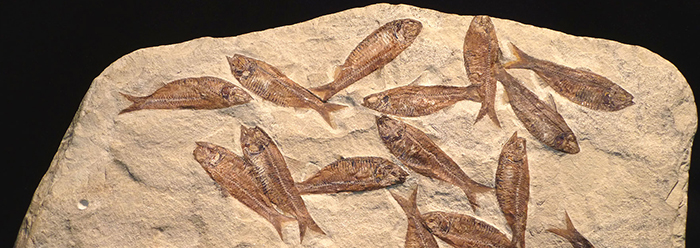A recent article in New Scientist illustrates how difficult it is to classify various forms of life, such as dinosaurs, into groups.1 The article, based on a cover story (and a follow-up story) in Nature, was titled “Dinosaur Divisions: Family tree gets Radically Redrawn.”2 The main problem with all classification systems is that they depend on the specific criteria used to group life into categories. Unfortunately, evolutionists tend to classify creatures by evolutionary criteria, which leads to many problems.
Whales have certain traits that could be used to classify them as fish, where many scientists put them until Linnaeus classified them as mammals. For example, French naturalist Pierre Belon (1517-1574), founder of modern embryology and comparative anatomy, classified anything living in the water as fish, which he divided into two large groups. One was “‘fish with blood’ (as Aristotle had done) that included not only actual fishes but also cetaceans.”3
The Swedish founder of modern taxonomy, Carolus Linnaeus (1707-1778), revolutionized biological classification and introduced the term Mammalia, which included the cetacea (cetaceans). Linnaeus classified all animals that were lung breathers, used internal fertilization for reproduction, produced milk, had body hair and were viviparous (i.e., gave birth to live young) as mammals. He “coined the term cetacea and separated them from fish by grouping them with the rest of the viviparous quadrupeds based” on these characteristics.4
Animals such as the platypus were so difficult to classify that they were put into their own group with Echidnas. Echidna are small terrestrial animals with a long, thin, narrow bill, sharp spikes on their back like a porcupine, and an elongated face. Echidnas and the platypus are the only egg-laying mammals in the group known as monotremes.
Another problem is that secular scientists use evolutionary assumptions to classify creatures.5 Evolution is shown as a tree. One of the first few life forms Darwin mentioned were at the trunk of the tree. This Darwinian tree is illustrated by many branches and twigs.
This evolutionary consensus for over a century is now being seriously questioned. ![]()
Since 1887, in harmony with this picture, the classical dinosaur classification was two main branches from which all dinosaurs evolved. This evolutionary consensus for over a century is now being seriously questioned.6 The two branches were the bird hipped dinosaurs (ornithischian) and the lizard hipped dinosaurs (saurischian).7 Mounting fossil evidence and continued investigation has undermined this simplistic picture. Many taxonomists argue that the view dinosaurs evolved from two different ancestors to produce the two basic classifications has essentially been falsified. Each branch is, in many ways, too similar to each other, a problem Barras described as the “rootstocks got lucky at exactly the same time—which seemed unlikely.”8
The first radically new dinosaur tree was drawn in 1984. This tree showed both the bird and lizard branches having a single common ancestor at the base of the dinosaur tree. Then a 2017 study by three Cambridge Professors, based on an analysis of 450 anatomical features for 74 of the earliest known dinosaurs, drew a brand-new tree.9 The research produced “a family tree unlike any seen before.”10 Their analysis found that “Diplodocus and its sauropodomorph relatives fell off of the dinosaur evolutionary tree entirely” because they were so different from the other dinosaurs. Thus they were given their own tree.
In late 2017, the dinosaur tree was again redrawn by Professor Max Langer and colleagues due to re-analysis and correcting what they called errors of the data used by Baron and his team.11 Langer’s crew managed to tweak the data in order to put the sauropodomorphs back into the dinosaur tree. One analysis of their re-analysis concluded, “If anything, the November 2017 analysis injected even more uncertainty into dinosaur science.”12 In an article titled “When is a Dinosaur not a dinosaur,” Barras concluded, “[With] so much uncertainty [in the field of dinosaur taxonomy] it is [now] even harder to work out what the earliest dinosaurs looked like, what made them so successful or even what species qualify as part of the club.”13
Part of the problem with dinosaur taxonomy, as is true of all animals known only by the fossil record, is that we often have only bone fragments or just a few bones as evidence. Also, Darwinists use evolution to force the organizing paradigm. Yet we have much more evidence in the case of dinosaurs than most fossils because many dinosaur bones are very large and thick. Under the right conditions, they preserve well. Consequently, millions of examples of dinosaur bones exist, including even some well-preserved near-complete specimens. With most fossils, unless living examples exist, major problems arise not just in basic taxonomy, but in filling the bones with organs. This is especially true of the claimed transitional forms used to argue for evolution.
Similar problems exist with the creationist taxonomy attempt called baraminology. One must first select the traits to compare, and then weigh their significance.14 This requires very subjective judgments that could produce either positive or negative correlations, depending on the animal taxa and the traits selected.15 Wood concluded, “Senter’s set of taxa and characters supports his [taxonomy] conclusions, … but other sets with more characters do not.”16 Is this the scientific method in action or an example of circular reasoning? He added, “Any baraminology study can be disputed, and none can be considered truly definitive.”17
The same is true of many taxonomic conclusions. Some have worked well, such as living mammals, reptiles, dogs and cats—partly because we are so accustomed to these divisions, and partly because these classifications are of living animals that were not classified by evolutionary frameworks. They were done by the first systematic taxonomist, Carolus Linnaeus, who used creationist frameworks. Linnaeus’s nomenclature system was done so well that scientists still use it today.
Taxonomy is clearly a very subjective endeavor. ![]()
Taxonomy is clearly a very subjective endeavor. Those who tend to group a large variety of animals into one species are called “lumpers,” and those who tend to form many new species are called “splitters.” The problem is, according to a Cornell-trained Ph.D. in evolutionary biology, scientists increasingly come up with,
more and more, new and (some say) improved species definitions; yet each also brought its own new complications. Like sailors in a leaky dinghy, taxonomists and biologists have found their boat forever sinking, as each tried endlessly to patch his or her own or someone else’s deflating definition, to what everyone would agree has been absolutely no good end … Taxonomists … could not agree on how the world was ordered, how particular groups had evolved and come to be, how to decide to order or name life. They couldn’t even agree on what a species was.18
The attempts to classify dinosaurs by evolutionary trees is a prime example of this major problem that she describes. Given this fact, Darwin’s book attempting to explain the origin of species is not only very problematic, but even the basic classification of living animals into groups has been proven to be very challenging.
References
- Barras, C. 2018. When is a Dinosaur not a Dinosaur? New Scientist. Posted on newscientist.com May 2, 2018, accessed May 20, 2018.
- Padian, K. 2017. Palaeontology: Dividing the Dinosaurs. Nature. 543: 494-495; Baron, M. G., D. B. Norman, and P. M. Barrett. 2017. A New Hypothesis of Dinosaur Relationships and Early Dinosaur Evolution. Nature. 543: 501-506.
- "When Whales Became Mammals; The Scientific Journey of Cetaceans From Fish to Mammals” in History of Marine Mammalogy. 2012. Edited by A. Romero and E.O. Keith. Croatia: Intech Books, 9.
- Romero, A. When Whales Became Mammals, 25.
- Darwin, C. 1859. The Origin of Species. London: John Murray, 490.
- Barras, C. When is a Dinosaur not a Dinosaur?, 39.
- Barras, C. When is a Dinosaur not a Dinosaur?, 40.
- Barras, C. When is a Dinosaur not a Dinosaur?, 39-40.
- Baron, et al. A New Hypothesis of Dinosaur Relationships and Early Dinosaur Evolution.
- Barras, C. When is a Dinosaur not a Dinosaur?, 40.
- Langer, M., et al. 2017. Untangling the dinosaur family tree. Nature. 551 (7678): E1-E3.
- Barras, C. When is a Dinosaur not a Dinosaur?, 41.
- Barras, C. When is a Dinosaur not a Dinosaur?, 39-41.
- Senter, P. 2010. Using creation science to demonstrate evolution: application of a creationist method for visualizing gaps in the fossil record to a phylogenetic study of coelurosaurian dinosaurs. Journal of Evolutionary Biology. 23: 1732–1743.
- Yoon, C. 2009. Naming Nature: The Clash Between Instinct and Science. New York: Norton.
- Wood, T. 2011. Using creation science to demonstrate evolution? Senter’s strategy revisited. Journal of Evolutionary Biology. 24: 914.
- Wood, T., Using creation science to demonstrate evolution?, 917.
- Yoon, C., Naming Nature, 108.
*Dr. Jerry Bergman is Research Associate at the Institute for Creation Research and former Adjunct Associate Professor at the University of Toledo Medical School in Ohio.























